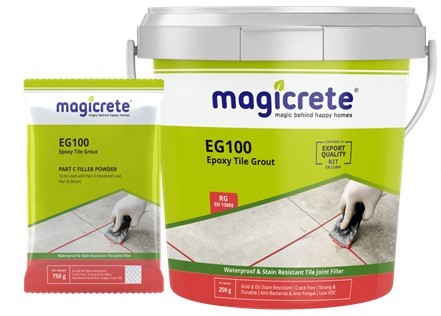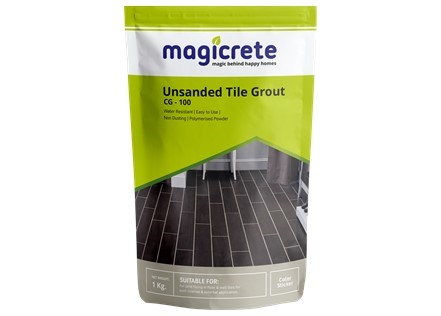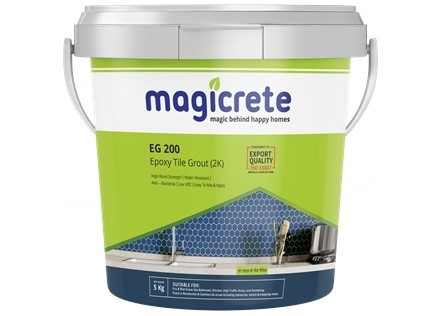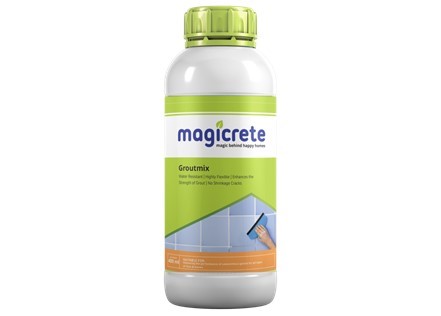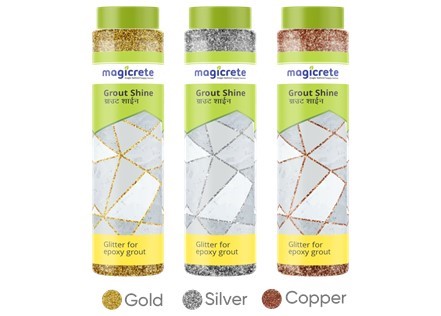FAQs
Once you complete your tile installation procedure, you get to notice some spaces left in between the tiles. We need grouts to fill those spaces. Hence, grout acts as a joint filler which increases the life span of the tiles. In addition, by grouting the tiles, you leave no room for the debris or water to enter in between or under your tile. We, therefore, need grout to add strength and rigidity to your tiles.
We all know bathroom areas are often prone to continuous water exposure. The heavy moisture from the steam and condensation may be problematic for the grouts. Avoid using cement-based grouts in the bathroom. The porous nature of cement grouts may lead to the breakdown of the grout itself. Cement-based grouts give rise to fungi and mold growth in moisture-subjected areas. We instead advise you to use epoxy grouts which are water-resistant and the best choice for the bathroom.
Following are the essential steps to tile grouting. • It is vital to choose the suitable grout for your area of application. Improper grouting may worsen the situation. • Mix the grout with the required quantity of water as instructed by the manufacturer. If you add too much water, the grout will lose its consistency and strength. • Apply the grout at an angle of 45◦ with the help of a grout float. • Wipe the excess grout with a damp sponge.
If you do not choose an appropriate grout suitable for your area or carry out improper grouting, you may start noticing cracks in your grouts, allowing the water to seep through. To grout water-prone areas, we recommend you use epoxy-based grouts. Epoxy grouts are waterproof, which makes them non-porous. It also has high bonding strength and won’t crack, stain, or shrink upon the action of water.
We advise you to seal your grouts permanently, especially in moisture-prone areas. If you do not do so in time, the grout will absorb bacteria, water, and stains. The entry of the grime and water may develop cracks in your tiles. These cracks can further cause the complete breakdown of your tiles at a certain point. When you seal your grout, you extend the lifespan of the tiles, which causes minimum damage to your tiling area.
The only kind of grout that doesn’t require sealing is epoxy grout. The sole reason is the already inherent sealers within them. In addition, epoxy grouts are tough and non-porous in nature. Therefore, you can skip sealers when dealing with epoxy grouts.
Sealing the grouts is a wiser step to increase the bonding power of your tiles. However, you can't go for one kind of grout for every situation. We advise you to choose your grout sealers according to your tiling requirements and location. If you carry out the grout sealing with proper care, it will take care of your grout from cracking or water attacks.
Unsanded grouts don't contain sand and find application in thin grout lines. You can use them for delicate tile surfaces. It isn't always necessary to carry out sealing in some applications of the unsanded grouts. However, we still recommend packing your unsanded grout with a penetrating sealer to provide excellent protection.
Epoxy grout used for tiles is the best choice for grouting your tiles when the areas come under continuous water action. Epoxy grouts are chemical resistant and non-porous. The non-porous nature keeps away bacterial or mildew growth. Hence, making them highly apt for water-prone areas such as bathrooms or kitchens. In addition, epoxy grouts help your tiles to perform well and stay durable for a long time.
It would be best if you used epoxy on tiles when the tiling is susceptible to the continuous flow of water. The water ingress can lead to the breakdown of your tiles. Cracks at specific points due to this water attack can prove to be detrimental. When you use epoxy on tiles properly, you are making sure that you prolong the lifespan of your tiles. It would help if you used epoxy grout on tiles when affected by chemical and water attacks.
Yes, you can lay epoxy over your tiles and existing cement grout. All you need is to do the task appropriately with the use of the correct tools. Without any hassle, the use of epoxy grout will enhance the look of your old tiling. It will also impart strength at the same time. The results will be much more robust and resilient.
You can create a new tiling surface on the existing one. All you need to keep in mind is that the surface of the old tiles should be free from any cracks or unevenness. It would help if you leveled the existing subsurface with proper grouting. Keep a check that there is no presence of mold or mildew. You can go for an excellent tile adhesive reliable enough to avoid any hindrances while tile on tile application. By doing so, you will create a smooth surface for the new layer of tiles.
Undoubtedly the tile on tile applications keeps you away from the hassle of lifting the old tiles. But, it is advisable as long as your existing surfaces have no hollowness and is relatively sound. Sometimes the old tiles are susceptible to mold and mildew attacks and with inappropriate leveling. Tile laying on the old tiles then may become problematic for the new layer of tiles. Check for such problems in your old tiles. If existing, you will need to prep the old surface with lots of effort. In that case, the best thing to do is get rid of the tile and thin-set.
Choosing a suitable adhesive is a significant step before laying new tiles on top of old tiles. First, see to it if the old surface is in level. If not, level out the accumulated dried grout with the help of a sander. Next, use suitable tile adhesives to secure any loose tiles so that the new surface would be smooth enough for the new tile installation. Once you adequately do the surface prep, you can tile on top of tiles as you tile any surface. Next, cover the new tiles with the appropriate adhesives over their backside and the subsurface. Continue until you have evenly tiled on top of the old tiles. Afterward, grout the new tiles too, and you are good to go.
Using epoxy grouts for your kitchen is a wise choice. Now you will ask us why. The sole reason is that it is highly durable, stain and chemical resistant, and suitably rigid to make it apt for kitchen application. It makes your kitchen countertop efficiently stronger. The epoxy grouts stand out in the crowd when areas susceptible to greases and water-prone damage need grouting. Your kitchen needs proper cleaning when you accidentally spill your favorite dish on the floor. With epoxy grout, cleaning becomes more accessible. You now don't need to worry about the maintenance of your kitchen.




